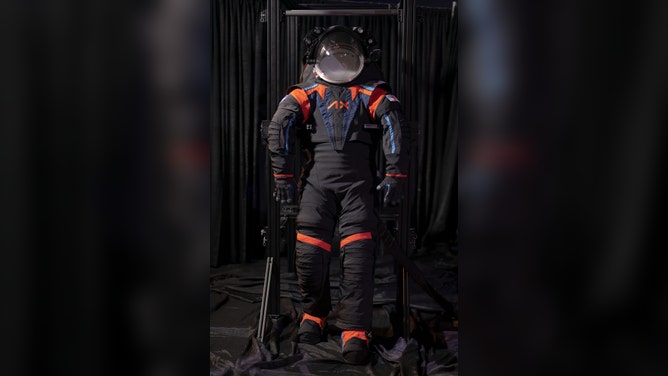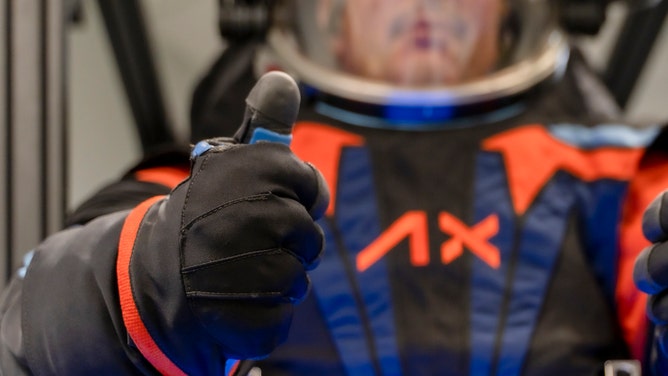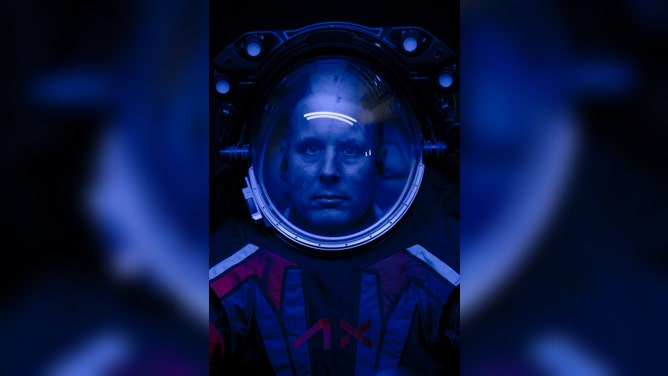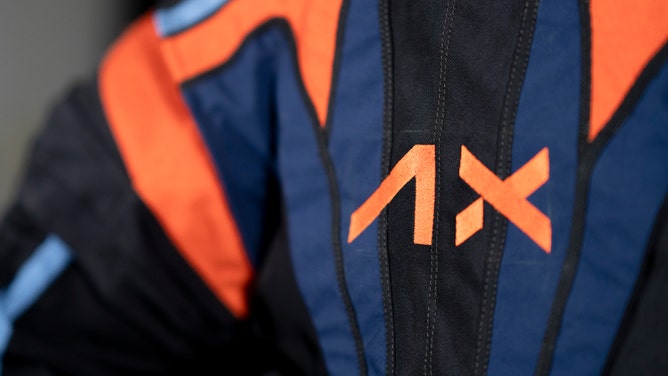Artemis spacesuits revealed: See the new gear that'll help astronauts walk on the moon
NASA and commercial partner Axiom Space revealed the prototype of the spacesuit that will walk on the moon with the Artemis III mission in 2025. The AxEMU was designed to work for 90% of all American males and females regarding fit, range of motion and flexibility.
Axiom Space reveals new Artemis III spacesuits
NASA and Axiom Space revealed their new modern spacesuits Wednesday morning. Fox News correspondent Phil Keating has the latest with an exclusive look.
HOUSTON – NASA revealed its version of "back to school clothes" on Wednesday with "back to the moon" technology.
Astronauts hit the runway to show off the prototype of the next-generation suit to walk on the moon.
"The suits that are used today were developed several decades ago, and originally they were developed for the space shuttle, and they are used in the International Space Station today," said Axiom's Extravehicular Activities Deputy Program Manager Russel Ralston in a statement. "But if we want to go back to the moon, then we need a new space suit."
NASA selected Axiom Space to design the Axiom Extravehicular Mobility Unit or AxEMU for the first moonwalk in half a century. That Artemis III mission is slated for 2025.
SEE THE OBJECTS HUMANS LEFT BEHIND ON THE MOON

The first look of the prototype of suit worn by the next person to walk on the moon.
(Axiom Space / NASA)
Four astronauts will crew Artemis III, and two will take a moonwalk, including the first female to leave her prints in the lunar dust. NASA reported that the current prototype could fit over 90% of American men and women. The AxEMU was designed for 90% of all American males and females regarding the fit, range of motion and flexibility.
The last time man walked on the moon was in 1972. And what a difference 50 years makes in technology, comfort and mobility. Gone are the days of the bulky space suit with nearly unbendable arms, legs and fingers.
"You could tell when the astronaut who was modeling his fingers and moving them around, waving, doing thumbs-ups. That was one of the problems with the old Apollo moon walking missions," FOX News Correspondent Phil Keating, who covered the event, told FOX Weather. "If they actually dropped a hammer onto the lunar surface, it took him a while to be able to get down because they were so bulky in the knees as well. So, these are far more flexible."

Flexible gloves were designed to work with specialized tools.
(Axiom Space / NASA)
Mobility will allow scientists and contractors to work more efficiently and safely. High-tech also gives astronauts more time on each walk. The pressurized garment protects the wearer from temperature extremes, radiation and micrometeoroid, according to an engineer working with NASA.
The first return mission to the moon will be to the South Pole, a cratered area in a permanent shadow. The sun only skims the rim of the deep craters because of the steep angle.
"These permanently shadowed craters feature some of the lowest temperatures in the solar system, down to -414 degrees Fahrenheit," NASA said in a news release.
HISTORY MADE: NASA'S MOON ROCKET ROARS TO LIFE LAUNCHING ON ARTEMIS 1 TEST FLIGHT

The helmet allows for better visibility and communication.
(Axiom Space / NASA)
But these suits were designed for multiple destinations, so they must shield the astronaut from extreme heat too. According to NASA, the lunar equator, where the first moon walk took place, reaches 250 degrees during the day and 208 below at night.
The moon has no atmosphere to filter out the incoming sun or insulate the sphere at night with greenhouse gasses.
"Space suit design has been really evolutionary for decades, and we are taking a larger leap," said Axiom engineer Michelle Stein. "We are changing it so that it is dust tolerant, so you can walk far distances, that you can help if your fellow crew member becomes incapacitated and the ability to bring them back with you. All these updates were more of a revolution than an evolution of the current design."
NASA DEVELOPS "MOON DUSTER" TO ZAP AWAY LUNAR DUST

The astronaut model can bend his knees, arms and fingers to greet a potential future space traveler at the press conference.
(Axiom Space / NASA)
While Axiom and NASA may have "unveiled" the suit, they are keeping the surface design under wraps. The dark layer is just a cover to conceal the suit's proprietary design, said Axiom.
The company collaborated with costume designer Esther Marquis from the Apple TV+ series "For All Mankind" to develop the cover using Axiom's logo and colors. The actual moon suit must be white to reflect heat.

The specially designed cover for display purposes. The actual suit is white.
(Axiom Space / NASA)
"Building on NASA’s years of research and expertise, Axiom’s next-generation spacesuits will not only enable the first woman to walk on the Moon, but they will also open opportunities for more people to explore and conduct science on the Moon than ever before," said NASA Administrator Bill Nelson.
"Our partnership is investing in America, supporting America’s workers, and demonstrating another example of America’s technical ingenuity that will position NASA and the commercial space sector to compete – and win – in the 21st century," he added.
Fast Facts About Spacesuits
Some facts about the equipment that allows astronauts to survive in space.

